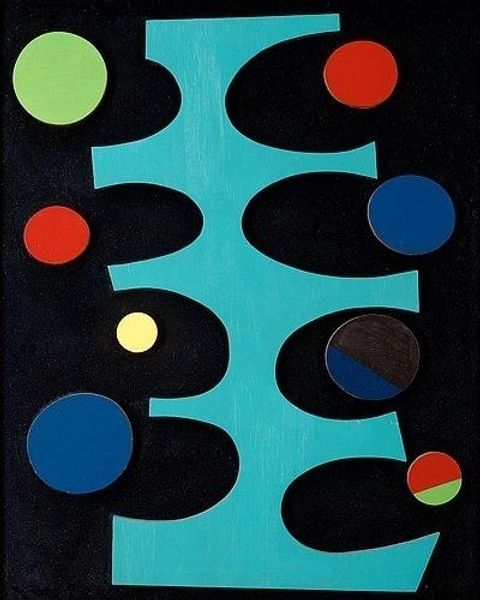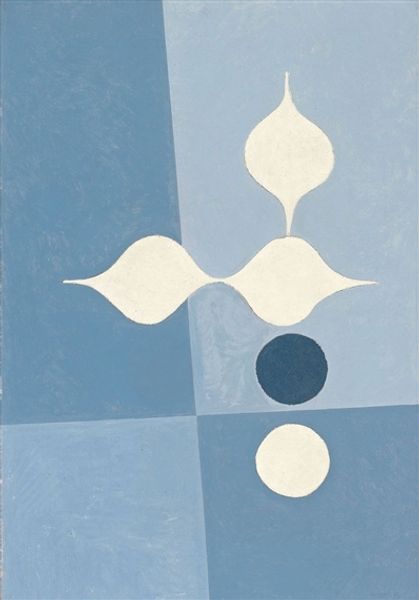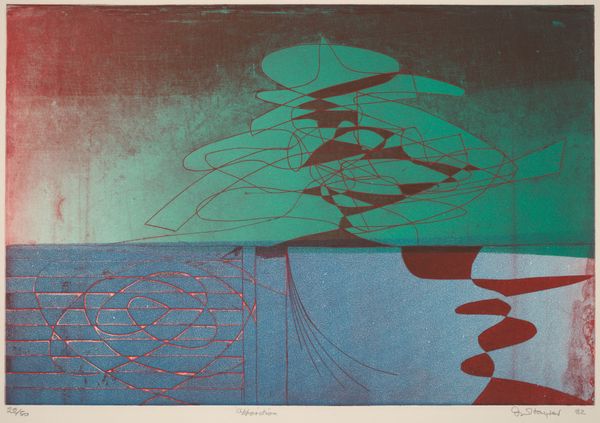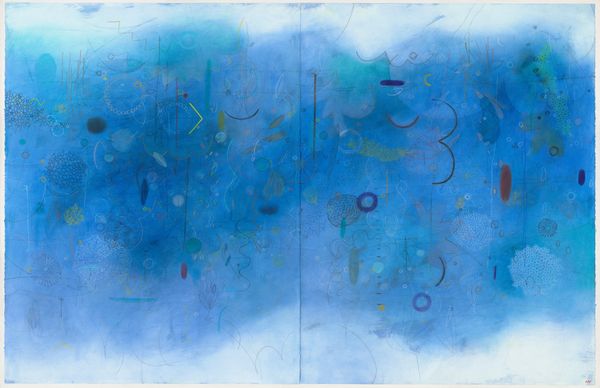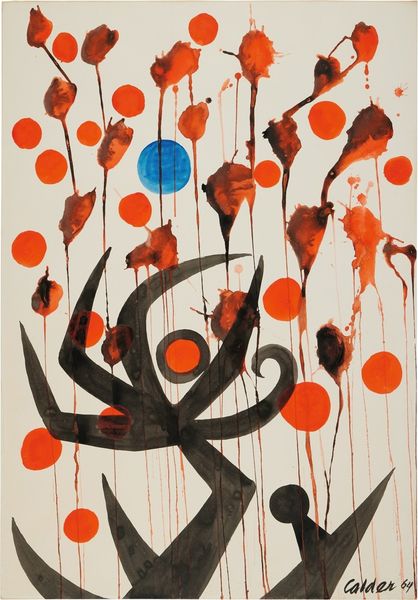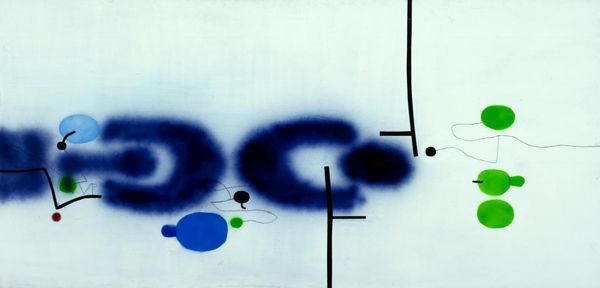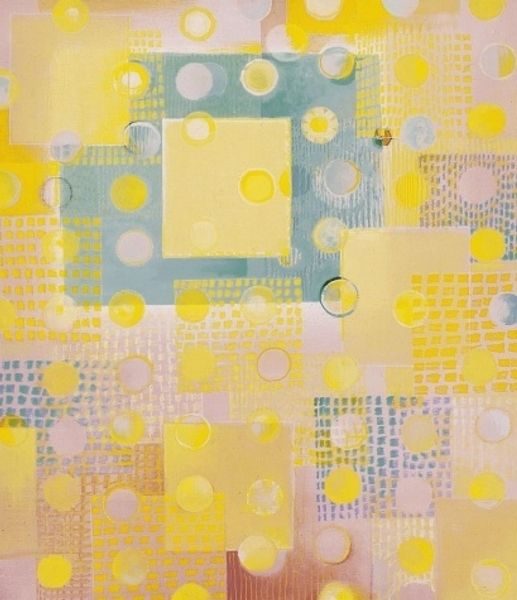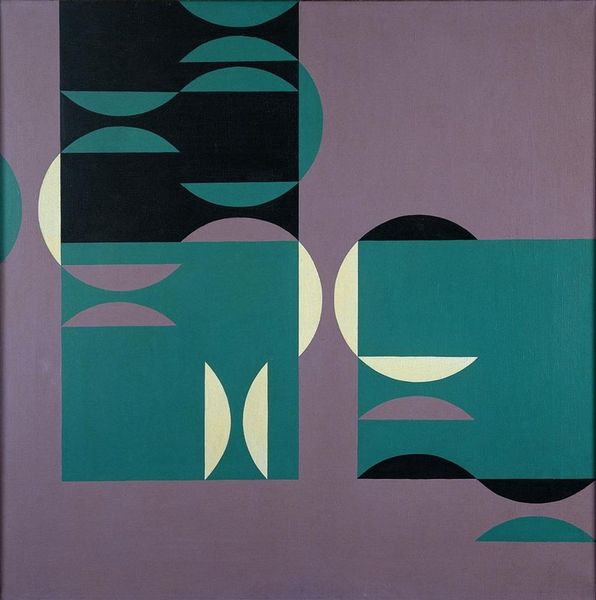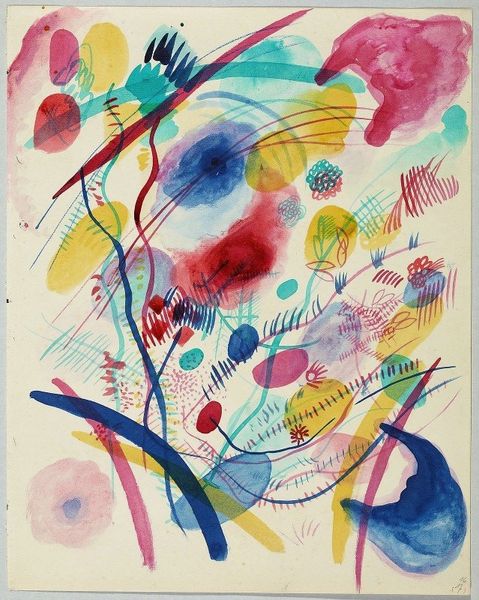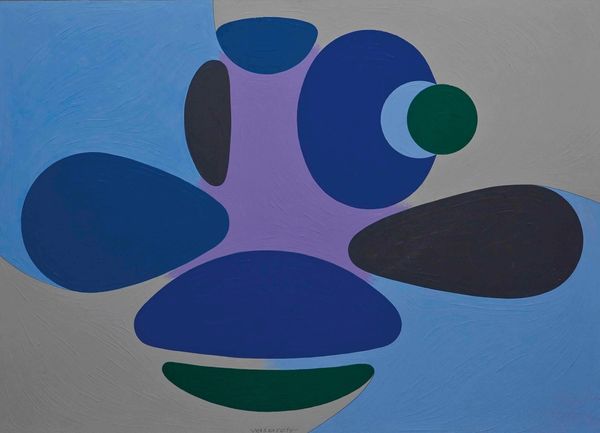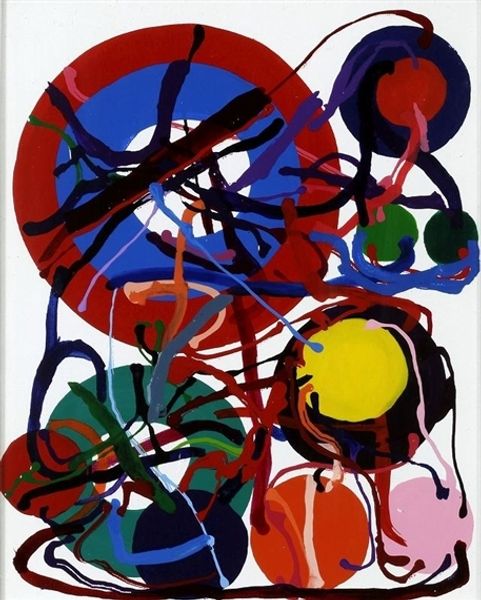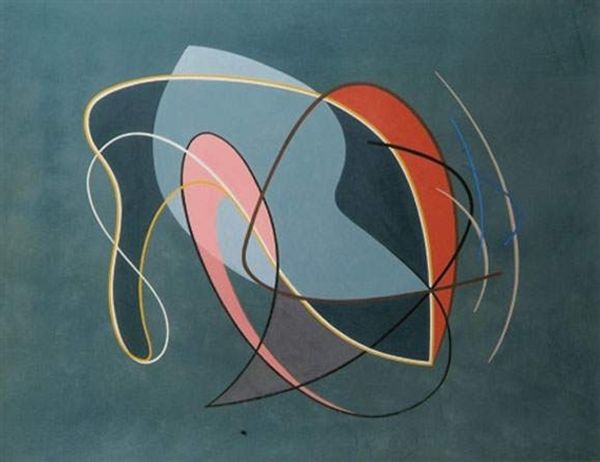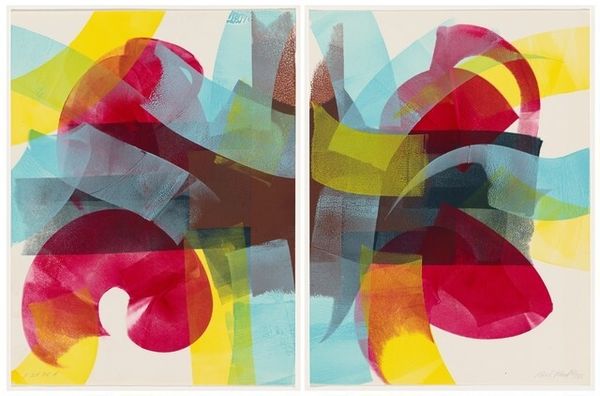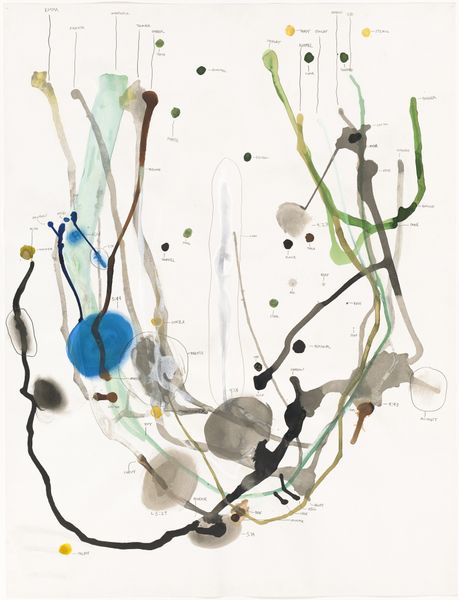
print, acrylic-paint
#
abstract painting
# print
#
acrylic-paint
#
geometric
#
abstraction
Dimensions: sheet: 100.33 × 75.57 cm (39 1/2 × 29 3/4 in.)
Copyright: National Gallery of Art: CC0 1.0
Editor: This is "New Moon," a 1968 print and acrylic painting by Beverly Hallam. The dark blues and greens are mesmerizing, almost hypnotic. I'm curious, what aspects of its composition do you find most striking? Curator: I'm drawn to how Hallam utilizes the picture plane. She has divided it horizontally, creating distinct upper and lower registers. Observe how the semi-circular forms and subtle gradations within each register activate a dynamic tension. There is an intriguing use of positive and negative space, wouldn't you agree? Editor: Definitely. The repetition of circular shapes, some whole, some crescent, generates a rhythm. The overlapping layers make it visually complex. Could the shapes be symbols? Curator: That is certainly a valid reading, but from a formalist perspective, the semiotics become less relevant. The impact stems from their arrangement and interplay with the colors. Notice the difference between the application of paint on the upper and lower halves and how it effects a very pronounced symmetry. Editor: I see that. The top is brighter, more diffused, while the bottom feels stark and contrasted. What’s the effect of mirroring it? Curator: It pushes us toward introspection and asks us to consider binary relationships. What kind of a dialogue between shapes and the use of reflective symmetries do you believe the artist intended by utilizing them together? Editor: Perhaps something about light and darkness, or growth and decay? Thanks for helping me view it beyond initial impressions, towards its internal elements. Curator: The point, of course, is that we now both share insight regarding the artist’s intention on what she hoped to project. That the power of abstraction is now clear in both its shape and design.
Comments
No comments
Be the first to comment and join the conversation on the ultimate creative platform.
